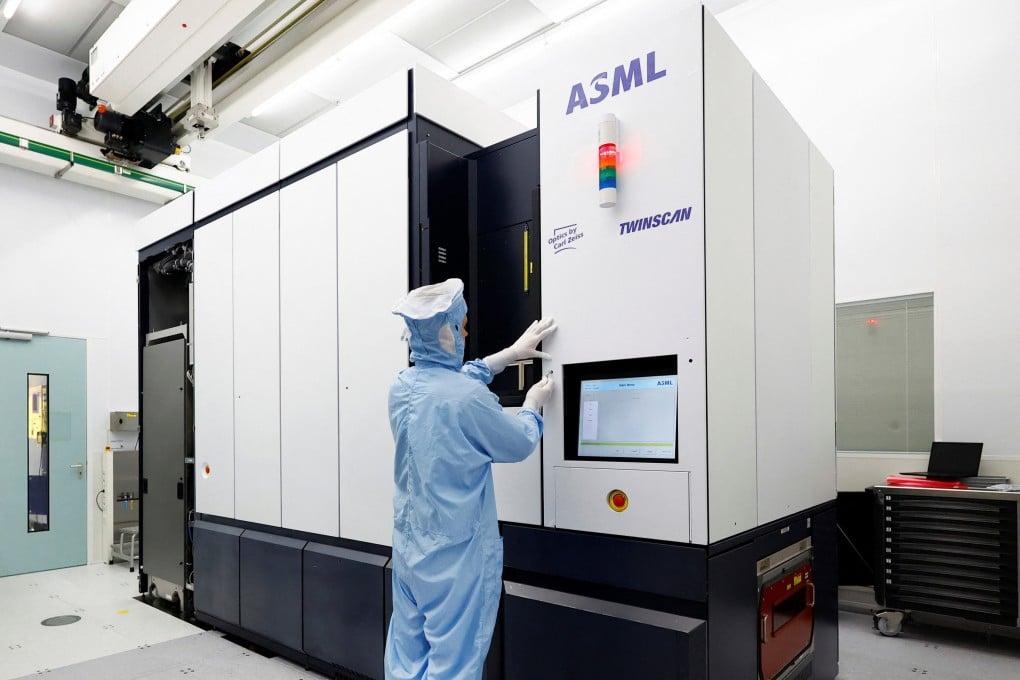China’s chip-making sees steady progress with new tools, but nothing to rival ASML
Lithography systems promoted by China’s industry ministry show slow advances, as tools remain stuck at the mature-node level

China’s semiconductor industry is continuing to make incremental steps in advancing its domestic lithography tools, according to specifications publicised by the central government, but analysts say the country has yet to make the big leaps it would take to catch up to Dutch firm ASML.
The Ministry of Industry and Information Technology (MIIT), which oversees the country’s chip industry, earlier this month published a list of new tools with the aim of promoting their use by domestic chip makers. While the list contains a slew of tools used in various parts of the manufacturing process – from making integrated circuits to mining and metallurgy – two lithography scanners in particular have caught the attention of international media as a sign of the latest progress being made in the country.
One of the scanners carries a krypton-fluoride (KrF) light source with a 248-nanometre wavelength and an overlay accuracy below 25nm, which is capable of a production resolution of 110nm on 12-inch wafers, according to the MIIT document. The other system uses a more advanced argon fluoride (ArF) light source with a 193nm wavelength and an overlay accuracy below 8nm, supporting a production resolution of 65nm on 12-inch wafers.
The ministry did not specify the manufacturer of the machines, nor how many wafers the machines can produce per hour. More importantly, the MIIT document did not provide details of their capabilities for feature alignment, which could indicate how advanced they might be.
Since last October, Washington’s restrictions on exports to China have specified an allowable level of accuracy for systems using dedicated chuck overlay (DCO), a standard for measuring feature misalignment between two layers exposed by the same machine. A more complex standard called matched-machine overlay checks for alignment of patterns created using different machines. Modern fabrication plants often use different machines to print features on the same wafer to make chips with billions of transistors.
Multiple analysts told the Post that the new machines likely refer to DCO, meaning they are probably not capable of making chips close to the 8nm level. Any production smaller than 65nm requires multiple patterning, however the 8nm overlay accuracy might not be able to support any multiple patterning processes.
“There is often a ratio between dedicated chuck overlay and the on-product overlay [in real production],” said one ASML engineer, who asked not to be named. “This is like building blocks one layer after another. If the misalignment figure between layers is 8nm, it means you can’t build a block with accuracy smaller than 8nm.”
